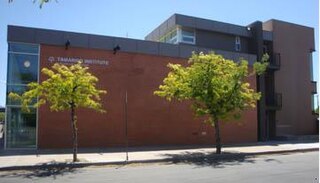 W
WLithography is a method of printing originally based on the immiscibility of oil and water. The printing is from a stone or a metal plate with a smooth surface. It was invented in 1796 by German author and actor Alois Senefelder as a cheap method of publishing theatrical works. Lithography can be used to print text or artwork onto paper or other suitable material.
 W
WThe Aboriginal Portfolio is an early 19th-century book of hand-colored lithographs of chiefs of Native American tribes. It represents the first important pictorial representation of Native American life.
 W
WA fashion plate is an illustration demonstrating the highlights of fashionable styles of clothing. Traditionally they are rendered through etching, line engraving, or lithograph and then colored by hand. To quote historian James Laver, the best of them tend to "reach a very high degree of aesthetic value."
 W
WJoseph, Pierre, Tancrède Latour was a French Romantic Drawer and painter. His works are hosted by several museums in South of France.
 W
WMoulin Rouge: La Goulue is a poster by French artist Henri de Toulouse-Lautrec. It is a colour lithograph from 1891, probably printed in about 3,000 copies, advertising the famous dancers La Goulue and "No-Bones" Valentin, and the new Paris dance hall Moulin Rouge. Although most examples were pasted as advertising posters and lost, surviving examples are in the collection of the Indianapolis Museum of Art and many other institutions.
 W
WHenry Constantine Richter was an English zoological illustrator who produced a very large number of skillful coloured lithographs of birds and mammals, mainly for the scientific books of the renowned English 19th century ornithologist John Gould.
 W
WJakob Schlesinger, also Johann Jakob Schlesinger was a German painter and restorer.
 W
WStill Life with Mirror is a lithograph by the Dutch artist M. C. Escher which was created in 1934. The reflection of the mirror mingles together two completely unrelated spaces and introduces the outside world of the small town narrow street in Abruzzi, Villalago, into internal world of the bedroom. This work of Escher is closely related to his later application of mirror effect in 1937 Still Life and Street. Escher manipulates the scale in different parts of the print to achieve the effect of smooth connection between worlds.
 W
WTamarind Institute is a lithography workshop created in 1970 as a division of the University of New Mexico in Albuquerque, NM, United States. It began as Tamarind Lithography Workshop, a California non-profit corporation founded by June Wayne on Tamarind Avenue in Los Angeles in 1960. Both the current Institute and the original Lithography Workshop are referred to informally as "Tamarind."